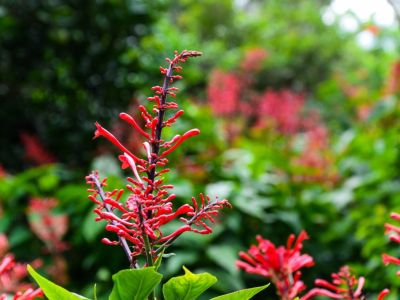Firespike Plant Information
These jewels of the landscape bed can grow 4 feet (1 m.) tall, and are covered in spikes of blazing, red blooms through the fall and winter. If you’ve already got a successful planting bed in your yard, then you know how to grow firespikes, as they need no special care in the right environment. Growing firespike plants is a great way to fill in a large bed quickly as well as a good way to add bright color that will last until spring.
Tips for Growing Firespike Plants
Firespike is a tropical native and likes to live in that environment. It can tolerate some sandy soil, but it won’t live through extended periods of cold. When you learn about firespike plant information, the most crucial point is that it will live in USDA Zones 8 or higher, which means the southernmost parts of California and Texas, plus Florida. If frost or freezing temperatures threaten, cover the firespike bushes to protect them. If they do get frozen, it will kill off the growth above ground, but it will usually grow back in the spring as soon as the soil warms.
Care of Firespikes
Taking care of firespikes is almost hands-free once you’ve planted them in the right soil. These plants love rich soil with lots of compost but are tolerant of pH levels on either side of neutral. The most important detail is the sun; firespikes love to live in the full sun. The plants will grow in partial sun or partial shade, but you’ll get fewer flowers and they won’t be as vibrant. Give firespikes plenty of room to grow when you plant them. Space the small bushes 24 to 36 inches (61 to 91.5 cm.) apart. They’ll fill in this space in a few years, creating a single wall of glossy green leaves and spikes of flaming blooms. Firespike plant care also includes keeping them from taking over your flower beds. When the branches get too long or unruly, prune them back. Do this two or three times a year for the best-looking plants.
